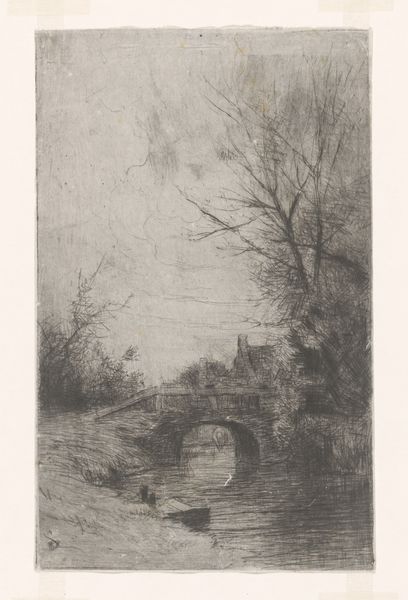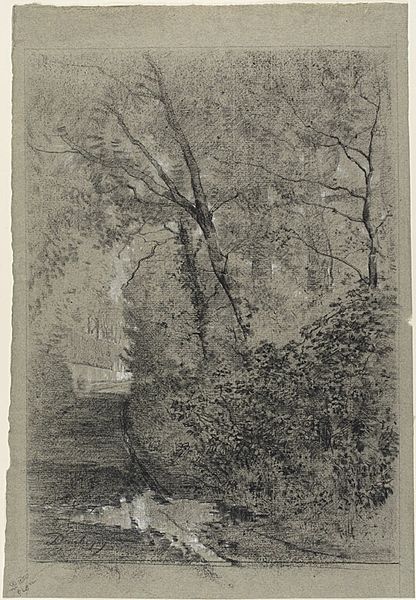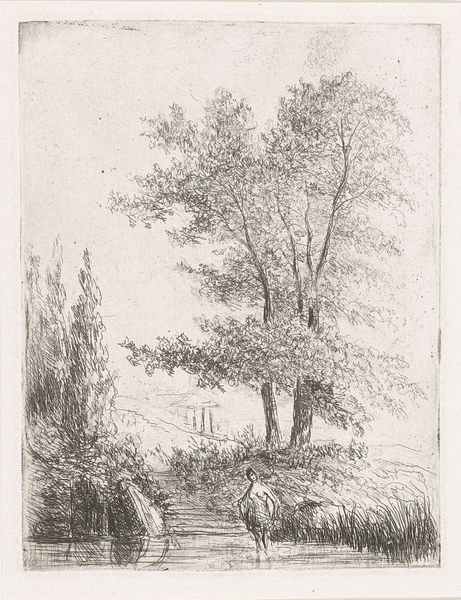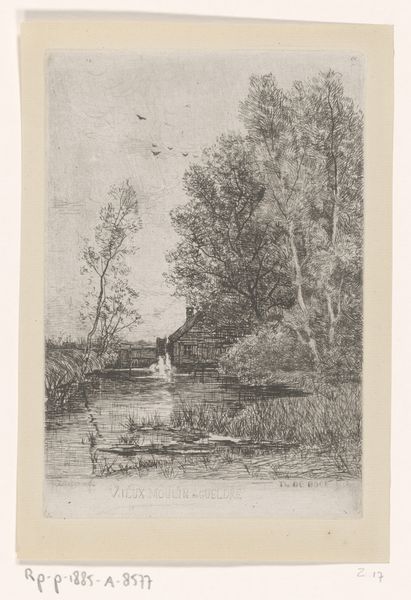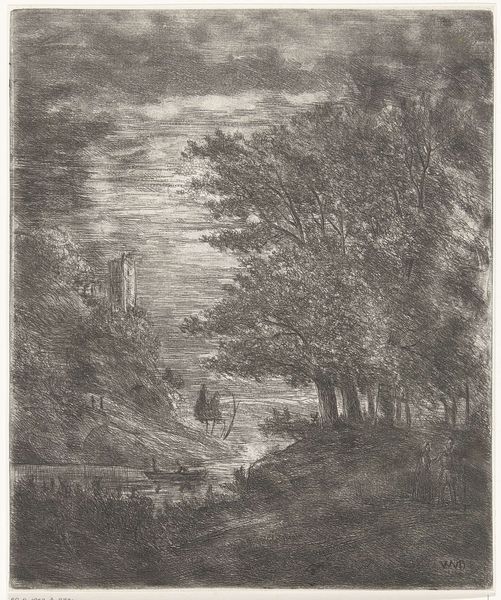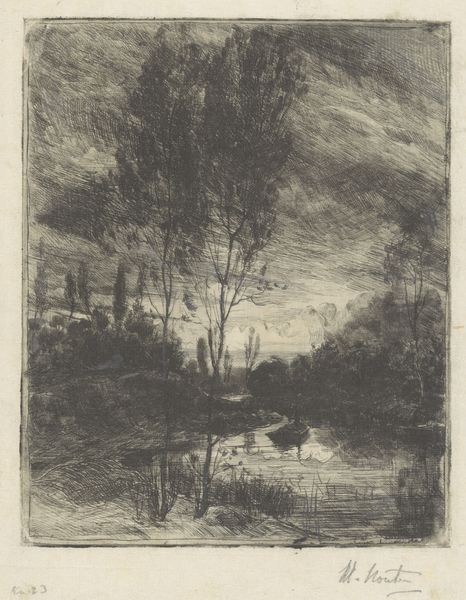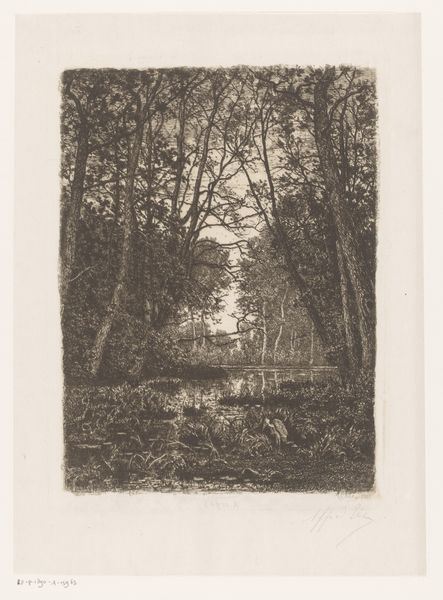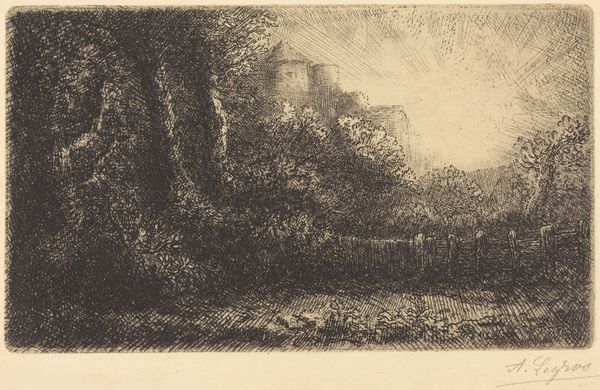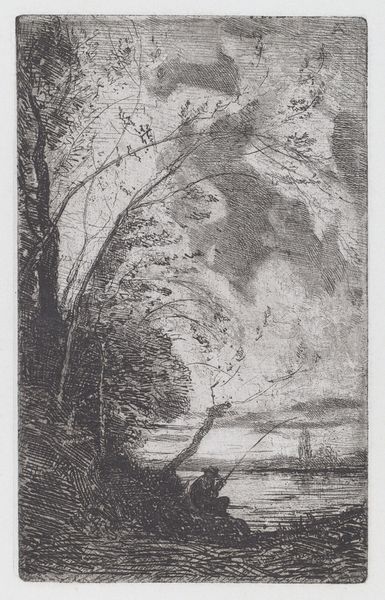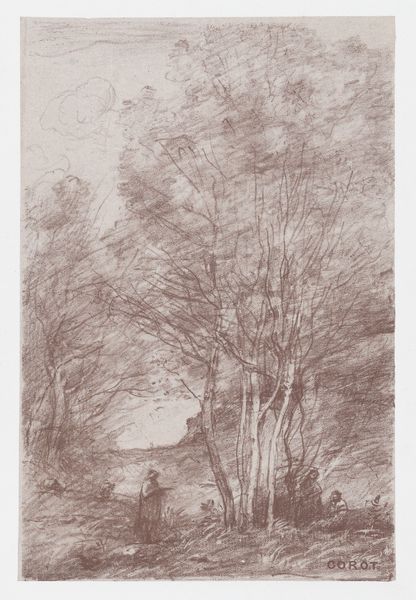
drawing, print, etching, graphite
#
drawing
# print
#
etching
#
old engraving style
#
landscape
#
graphite
#
realism
Dimensions: height 202 mm, width 126 mm
Copyright: Rijks Museum: Open Domain
Curator: What a subtle yet evocative image! This is "Brug over een beek," or "Bridge Over a Creek," by Philip Zilcken. The etching, drawing, and graphite piece, residing here at the Rijksmuseum, was created sometime between 1867 and 1890. Editor: It feels almost ghostly. The lines are so fine, giving the impression of a memory fading away. It’s quite small, isn’t it? The old engraving style adds to that sense of antiquity, of course. Curator: Yes, the scale is intimate. Zilcken’s choice of etching allows for incredible detail but also invites consideration of its production and its context as reproducible art. The materials themselves—the copper plate, the etching needles, the inks—they're not extravagant. It speaks to a democratized access to art making, perhaps reflecting a broader societal shift in valuing accessible representations of the everyday. Editor: Absolutely. And how were such scenes viewed back then? Was this type of bridge, rendered realistically as it is here, something ordinary, reflecting the growth and spread of infrastructure and trade in the Netherlands during the late 19th century? Were canals, such as the one the bridge stretches over, perceived in relation to both labor and transport? It makes you wonder about the relationship between landscape art, progress, and societal change. Curator: Exactly! The image is not merely a pretty scene, but a document of evolving interactions between people and the land. One should consider how these prints circulated, too – their exhibition, their collection by bourgeoise society, shaped artistic trends and cemented an artist’s reputation. The availability and portability of prints allowed for this sort of representation of "the local" to influence art circles. Editor: I agree completely. Seeing this etching alongside other depictions of daily life tells us something about how people at the time envisioned their place in the world. The popularity of realism and landscape painting provided both a comforting picture of a quaint life as well as provided the tools and concepts through which one could view industrial developments. Curator: Well said. Ultimately, viewing Zilcken’s work is about confronting the relationship of the image, and material making and class; we can understand that art's social role depends, above all, on a context shaped by people and production. Editor: And for me, the piece helps us contextualize the period through a tangible record of place and perception. Examining these images with that historic lens is fascinating, broadening understanding beyond simple art admiration.
Comments
No comments
Be the first to comment and join the conversation on the ultimate creative platform.
